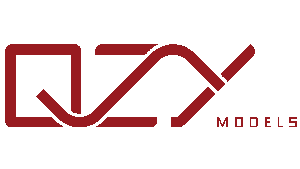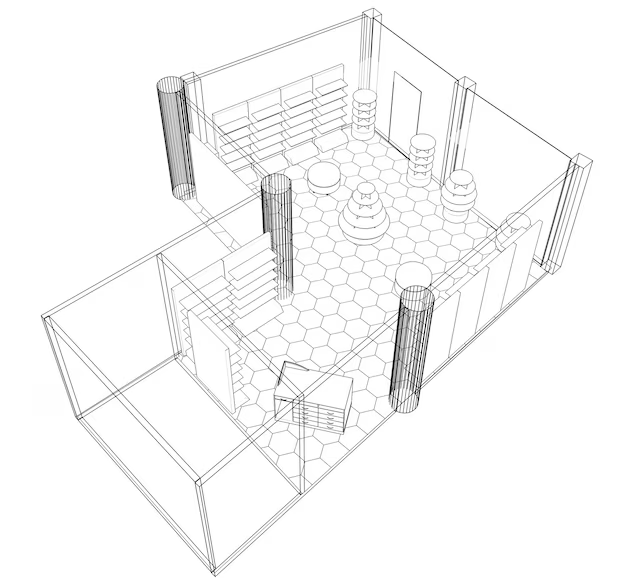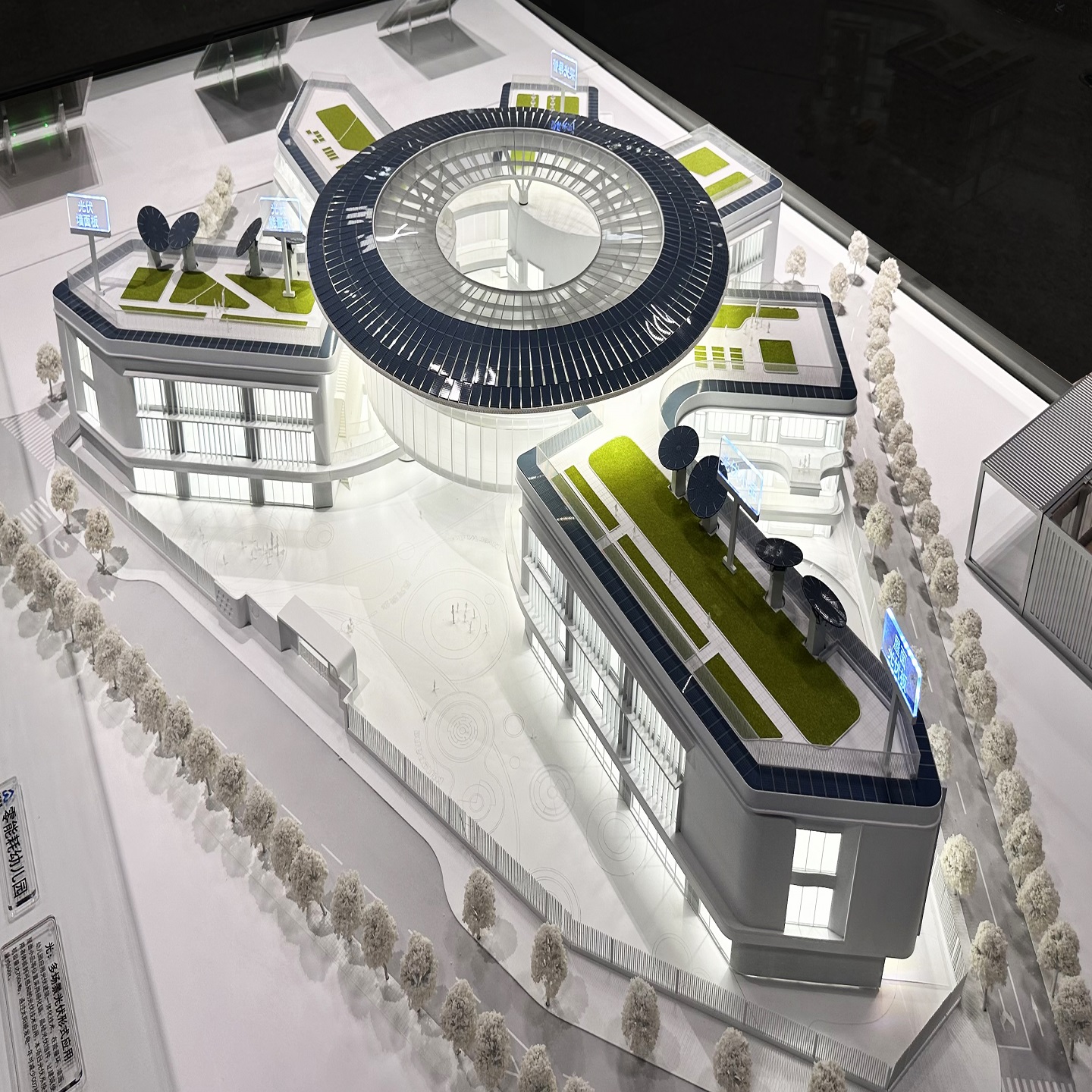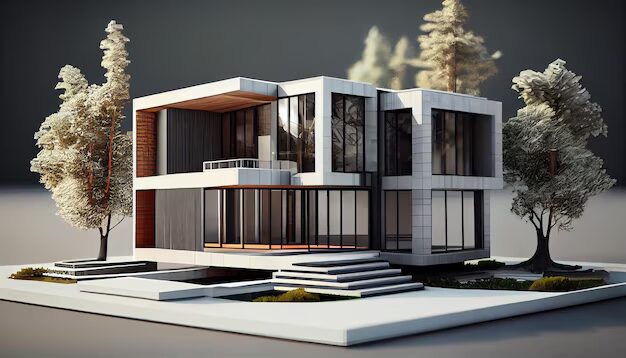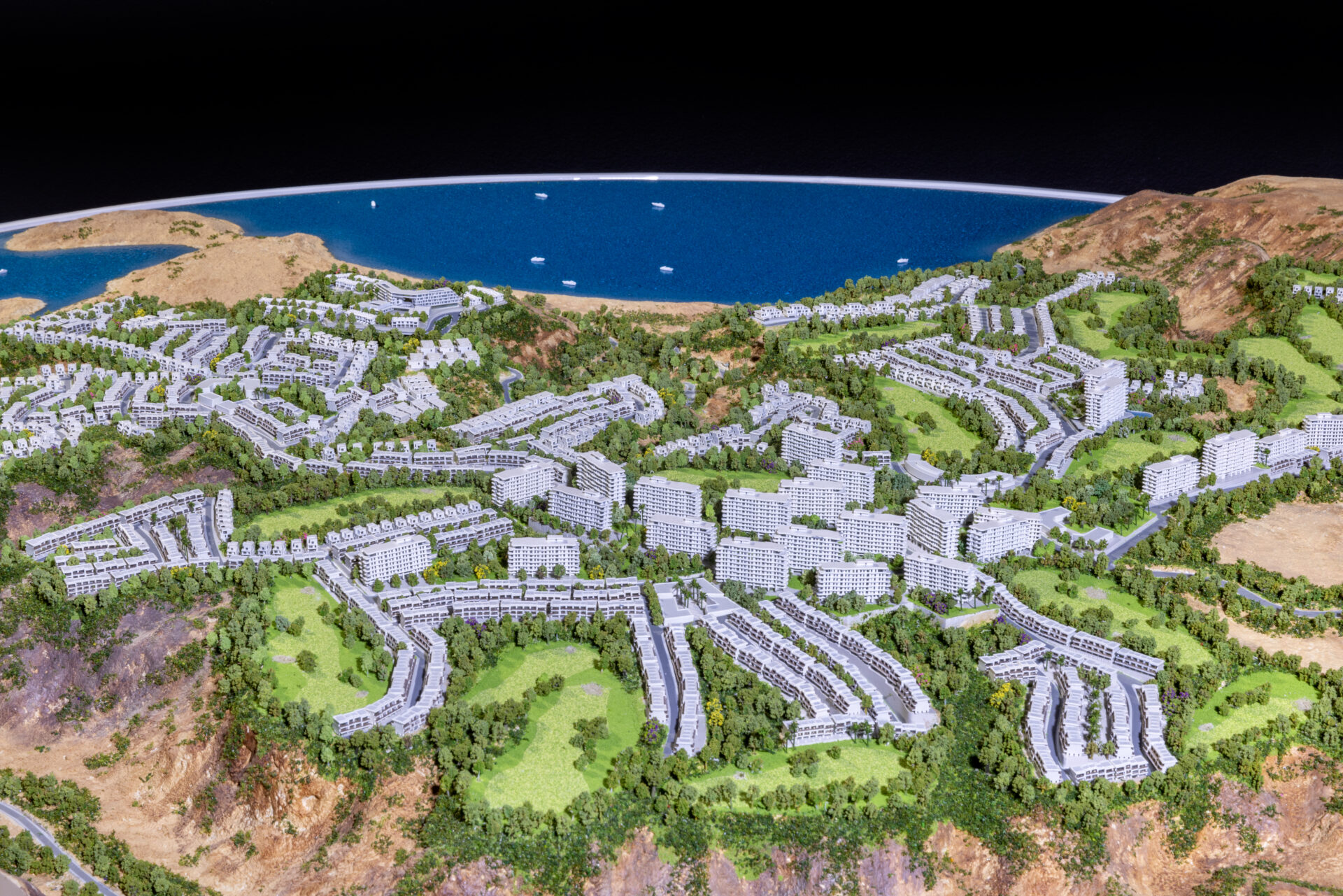Have you ever walked into a room and imagined how a splash of color or a clever layout could transform it? If that spark of creativity keeps you up at night, starting an interior design business might be your calling. It’s a chance to turn your passion into a paycheck—crafting spaces that delight clients while building a career on your terms. But let’s be real: launching a business isn’t all mood boards and fabric swatches. It takes grit, a bit of hustle, and a smart plan to get off the ground, especially when you’re starting with a tight budget and no big-name clients knocking on your door.
This guide is for you—the aspiring designer ready to leap, even if you’re not sure where to begin. We’ll walk you through a doable blueprint to start your interior design business, from figuring out what lights you up to landing your first gig—all without needing a fancy office or a fat bank account. Along the way, we’ll sprinkle in some unique tricks, like using simple prototypes to wow clients, that you won’t find in every playbook. Ready to make your mark? Let’s dive in.
Clarify Your Purpose and Specialty
Before you order business cards or pitch to clients, you need to know why you’re doing this and what you’re great at. This isn’t just soul-searching—it’s the foundation that keeps you focused when the going gets tough. Here’s how to nail it down without spending a dime.
Discover Your Design “Why”
Start with what compelled you to be here. Do you love turning cramped apartments into airy oases? Maybe you geek out on eco-friendly materials? Grab a notebook—or your phone’s Notes app, which is free—and jot down what gets you pumped about design. Maybe it’s “helping families feel at home” or “making offices not so clinical.” This is not yet about grand mission statements; this is about what keeps you sketching ideas at 2 a.m.
Why bother? Because when clients come to you and ask, “What’s your thing?” you’ll have a genuine answer, not one you’ve rehearsed. And it will guide every choice you make—from the work you take on to the attitude you exude. Write it down in 10 minutes today. That’s it.
Pick a Niche You Can Own
Now focus in on a specialty that fits your skill set and your local market. You don’t need to be all things to all people—small and focused is smarter to start. Love kitchens? Specialize in them. Tiny house obsessed? That’s your niche. Check out free resources like Zillow or local Airbnb listings to determine what’s needed—maybe starter homes for young couples or vacation rentals with character.
For example, if you’re stuck in a city of shoebox apartments, you could become the specialist at small space maximizing. Old farmhouses in the country? Highlight rustic renovations. Picking a niche doesn’t limit you—it’s your strength. It tells the client, “I’m the specialist at this,” and makes you noticeable when they’re browsing around for help.
Prototype Your Style Affordably
This is where you get practical: test your ideas before you bet the farm on them. You dont require high-end software yet—grab a pencil and paper and sketch a room in your niche. Better yet, dash to the dollar store for foam board or cardboard (under $5) and build a mini model of your design. A 10-inch square layout of a living room with tiny furniture cutouts shows how you’d arrange a space—way more real than a flat drawing.
This is not just practice but also proof of your style. Photograph that model with your cell phone, and now you have something to brag about. It’s low-tech, low-budget, and you can play with your conception until you think it’s right. Need to know how light will work in your design? Cut a hole for a “window” and shine a flashlight through it. It’s crude, but it works—and clients love to see something they can touch.
Lay the Legal and Financial Foundation
You’ve got your vision—now it’s time to make it official without breaking the bank. Setting up the legal and financial basics sounds daunting, but it’s simpler than you think if you start lean and smart. Here’s how to get legit and keep your money straight, step by step, with minimal fuss or cost.
Name Your Business Simply
Your business name makes the first impression, so be memorable—but avoid overthinking. Come up with something that subtly references your taste or location, such as “Cozy Corner Designs” or “Austin Space Studio.” Use short and easy-to-spell names—customers won’t forget “InteriorEleganceByYou.
Visit your state’s online business registry (free to search—Google “[your state] business name search”) to check if it’s available. If it’s available, grab it—most states are $10-$50, and you can typically do it online in 10 minutes. Bonus: Snag a corresponding domain name (e.e., cozcornerdesigns.com) for pennies (about $10/year through Namecheap or Google Domains) so you’re good to go for a website down the road. Don’t need to build it yet—just lock up the name.
Start as a Sole Proprietor
You don’t need a flashy LLC yet—hold off on that until you’re raking in the cash. A sole proprietorship is the simplest to establish: just you, no extra paperwork beyond registering your business name with your state or county (usually $20-$50, sometimes free). Look on your state government website (e.g., “[your city] business registration”) for the form—it’ll usually be a one-pager that you can mail in or upload online.
This setup puts your business and personal taxes together (on your regular 1040 return), keeping things neat and simple for now. Liability worries? It’s a risk—one that could mean your assets are on the line in case a client sues—but you can cover yourself with insurance (see below) and sleep better at night. Make the switch to an LLC down the road (about $100-$300) when you’re working regularly.
Secure Free or Cheap Essentials
Then formalize with the IRS and bank. Go to IRS.gov and get an Employer Identification Number (EIN)—free, 5 minutes online, and they’ll give it to you immediately. Treat it like a Social Security number for your business; you’ll use it when filing taxes and banking. No employees? You still want to have it professional and separate.
Then, get a business license from your city or county—fees vary ($25-$100), but most let you apply online or at city hall with a quick form. Search “[your city] business license” to find out the rules. Finally, open a free business checking account—online banks like Novo or Bluevine have no fees or minimums, and you can link it to PayPal or Venmo for client payments. Track income and expenses in Google Sheets (free) until you’re ready for something like QuickBooks ($15/month later).
Protect Yourself on a Budget
Things happen—a bookshelf you’ve built falls over, or a customer trips on your tape measure. Liability insurance covers you and doesn’t have to cost as much as you might think. Look at providers like Hiscox or Next Insurance—beginner policies start at $20-$30/month for small fish like you. You can enroll online, no middleman to pay, and it’s worth it if a client gets upset.
Don’t skip this: one claim could tank your savings without it. Pair it with a simple contract (find free templates on sites like Rocket Lawyer—just customize with your name and terms) to spell out what you’ll do and what clients pay. It’s not ironclad, but it’s a start—and free. Technical tip: Always list “scope of work” and “payment due on completion” to avoid headaches.
Build a Portfolio That Sells Your Vision
You’ve got your legal ducks in a row—now it’s time to show the world what you can do. A portfolio is your ticket to landing clients, but if you’re just starting, you might not have a single paid project to your name. No worries—you can still create something eye-catching with what’s already around you. Here’s how to build a portfolio that screams “hire me,” even on a shoestring.
Start with Personal Projects
No clients yet? Don’t worry. Redo your own room—or a friend’s—into your first masterpiece. Replicate your living room nook with a used lamp and a fresh coat of paint ($20 max), or help your friend reconfigure their bedroom for better flow. The goal: create a before-and-after that showcases your transformation skill.
Grab your phone and photograph—use natural light by a window (free) and experiment with the angle until it’s sharp. No fancy space? Create a tabletop vignette with what you have: a vase, a book, a candle. It’s not about scale—it’s about showing your eye. These photos are the foundation of your portfolio, and they cost virtually nothing.
Make It Professional for Free
Your images need a clean home, not a messy phone gallery. Use Canva (free plan) to knock up a stylish PDF portfolio—drag in your pics, add a title like “Jane Doe Designs,” and choose a clean template. Opt for an online album instead? Google Photos (free) lets you edit shots into a shareable link. Either way, make it simple: 3-5 projects maximum, with a short description per image (e.g., “Maximized a 10×10 room with multi-use furniture”).
No pro camera? Borrow someone’s DSLR for a day if you have the option, or shoot on your phone—new phones are point-and-shoot equivalents in decent light. The trick is consistency: same angles, same feel from one shot to the next. It’s zero-dollar shine that makes you legit.
Add Tangible Wow with Models
Photos are great, but something in your hand? That’s on another level altogether. Use foam board or a dollar store’s cardboard ($1-$3) and create a miniature version of your design—like a 12-inch-square bedroom floor plan with small furniture cut out from scraps. Put it together using a $1 glue stick, and ta-da—you’ve got a prototype that shows spatial wizardry in three dimensions.
Why bother? Clients get wowed by stuff they can hold—it’s clearer than a sketch and beats flat pics for explaining your vision. Take a decent photo of it (again, phone’s fine) and add it to your portfolio with a note: “Scaled model of a cozy reading nook.” If you want a slicker option down the line, services like QZY Models offer affordable 3D-printed prototypes—but for now, DIY keeps it cheap and hands-on.
Attract and Delight Your First Clients
You’ve got a portfolio—now it’s time to get it in front of people who’ll pay you. Finding your first clients and keeping them happy doesn’t need a marketing budget or years of connections. It’s about starting small, being smart, and delivering a little extra. Here’s how to land those early gigs and turn them into raving fans.
Target Local Leads Easily
Your first clients are closer than you think—living within your network or community. Hang up a fly “I’m starting an interior design company—does anyone want a room overhaul?” in open spaces like your neighborhood Facebook community, Nextdoor, or perhaps a library community board (providing your own thumbtacks). Notify friends and family you’re prepared to work—their buddy at work might just have someone wanting to furnish the new cubicle or baby room.
Target a particular crowd that aligns with your niche—such as new homeowners or small business owners. Browse Craigslist’s “gigs” section (free) for locals who need design assistance. It’s not glamorous, but it’s free and targets people already searching. One response could be your first paycheck.
Set Fair, Starter Prices
Pricing feels tricky when you’re new, but keep it simple and fair. Start with an hourly rate—$30-$50 is rookie-friendly and covers your time without scaring folks off. Small project? Offer a flat fee, like $200 to style a living room or $500 for a full bedroom plan. Test it on your first gig and adjust if it feels off.
Be upfront: tell clients, “This covers planning and sourcing—materials extra.” Use a free Google Docs invoice template (search “invoice template”)—fill in your name, hours, and total, then email it. It’s pro enough for now and costs nothing. Clients respect clarity, and you’ll dodge awkward money talks later.
Impress with Simple Tools
Impress them without breaking the bank. Sketch out your ideas on paper (free), and then use a free program like Room Planner or Floor Plan Creator to show a basic plan—download from your app store, free. Add a quick, hand-drawn detail—like a doodle of their sofa with new pillows. It’s personal and shows effort.
Want to stand out? Spend $1-$2 on foam board (dollar store) and build a tiny model of their space—say, a 10-inch kitchen with cutout counters. It’s a cheap visualization trick that makes your pitch pop. Clients love seeing their ideas come to life, and it proves you’re not just talk. No fancy tech needed—just your hands and a ruler.
Source Materials Smartly
You don’t have vendor accounts yet—shop pro anyway. Dig through thrift shops or Habitat ReStores for deals on furniture ($5-$20) to offer clients options. Visit Home Depot’s bargain shelf or acquire fabric remnants (under $10) to demo textures. Snap photos of those with your phone and say, “Here’s what we could work with.”
Start talking up local shop staff—say, “Got any designer discounts?” or “Can I get a heads-up on sales?” It costs nothing to build that rapport, and eventually, they’ll throw you deals. It’s your first step to supplier connections—small, scrappy, and doable now. Happy customers will spread the word.
Grow Smart with Tools and Connections
You’ve landed your first clients—now it’s about keeping the momentum without burning out or blowing your budget. Growing smart means leaning on free tools, building a local crew, and marketing on the cheap. Plus, a few clever upgrades can set you up for bigger wins. Here’s how to scale your fledgling design business, step by scrappy step.
Use Free Tools to Stay Organized
Keeping tabs on clients, ideas, and deadlines? Spend money first—isn’t necessary. Free materials will do the trick. Try Trello (free plan) to organize projects: set up a board with “To Do,” “In Progress,” and “Done” lists, and then add tasks like “Source rug” or “Sketch layout.” Use Google Calendar (free) to calendar time for calling or running to the grocery store.
It’s simple: 10 minutes to set up, zero cost, and you’ll be a pro when a client asks, “Where are we at?” No more missing emails or Post-it notes—just an automated system that grows with you. When you require more, applications like Asana (free basic) can handle bigger projects.
Connect with Local Pros
Your lifeline is your network, and no conference ticket is required to build it. Go to free events in your neighborhood—home repair seminars at Lowe’s or an open house at a realtor’s office. Chat with contractors, painters, or photographers; give each other numbers and say, “I’d love to refer business to you if you’d refer to me as well.” Join a free Facebook group for small businesses in your town—make a quick “Hey, new designer here—let’s work together!
These connections equate to referrals and support down the line—like a painter who will hurry a job for your buyer. It’s 101 on supplier relations: start small, be nice, and watch it pay dividends. No cash involved—just a handshake and a smile.
Market on a Shoestring
Spread the word without a large ad budget. Post daily on Instagram (gratis)—show your new thrift store purchase or a quick tip like “3 ways to light up a dark room.” Use tags like #InteriorDesignNewbie or #YourCityYourCityYourCityDesign to attract local attention. Completed project? Share a before-and-after photo—clients love that stuff.
Print basic flyers at home ($10 for paper and ink) with “Affordable Design Help—Call Me!” and your number. Distribute them at coffee houses or put them on grocery store bulletin boards. It’s low-budget, low-tech, and puts you in front of people who’d never lay eyes on you online. Every like or call contributes to your buzz.
Level Up with Prototyping
As the funds trickle in, step up your game with enhanced visualization. Stick with your $1 foam board models—still gold—but add a $10-$20 boost: order a basic 3D print from a local maker (search Etsy or a library with a 3D printer) for a client presentation. A finished mini kitchen or bookshelf shows your precision and cuts “I don’t get it” discussions in half.
It’s a technology bonus: your clients exactly understand what you’re saying, and revisions are quicker. Want pro-grade gloss? Brands like QZY Models create custom prototypes when you’re ready to wow the whales—but meanwhile, a local print keeps it within your budget and at hand. Small price, big payback.
Final Thoughts
Starting an interior design business doesn’t need a big budget, a fancy degree, or a Rolodex full of VIPs. It’s about finding your spark—whether that’s turning tiny apartments into gems or giving old homes new soul—and building from there, one doable step at a time. You’ve got a roadmap now: clarify what drives you, set up a lean foundation, show off your vision with a scrappy portfolio, win your first clients with smarts and heart, and grow wisely with free tools and local allies.
Every thrift store find you flip, every foam board model you glue, every “Wow, I love this!” from a client—it’s proof you’re on your way. Stay authentic, keep tweaking, and don’t be afraid to start small. That $1 prototype or free Instagram post could be the seed that lands you a dream gig. And as you grow, little upgrades—like a sharper 3D model from a pro service like QZY Models—can take your hustle to the next level.
So grab that notebook, sketch your first idea, and get out there. You don’t need much to begin—just your creativity and a little grit. Your design story starts now—what’s your first move?
